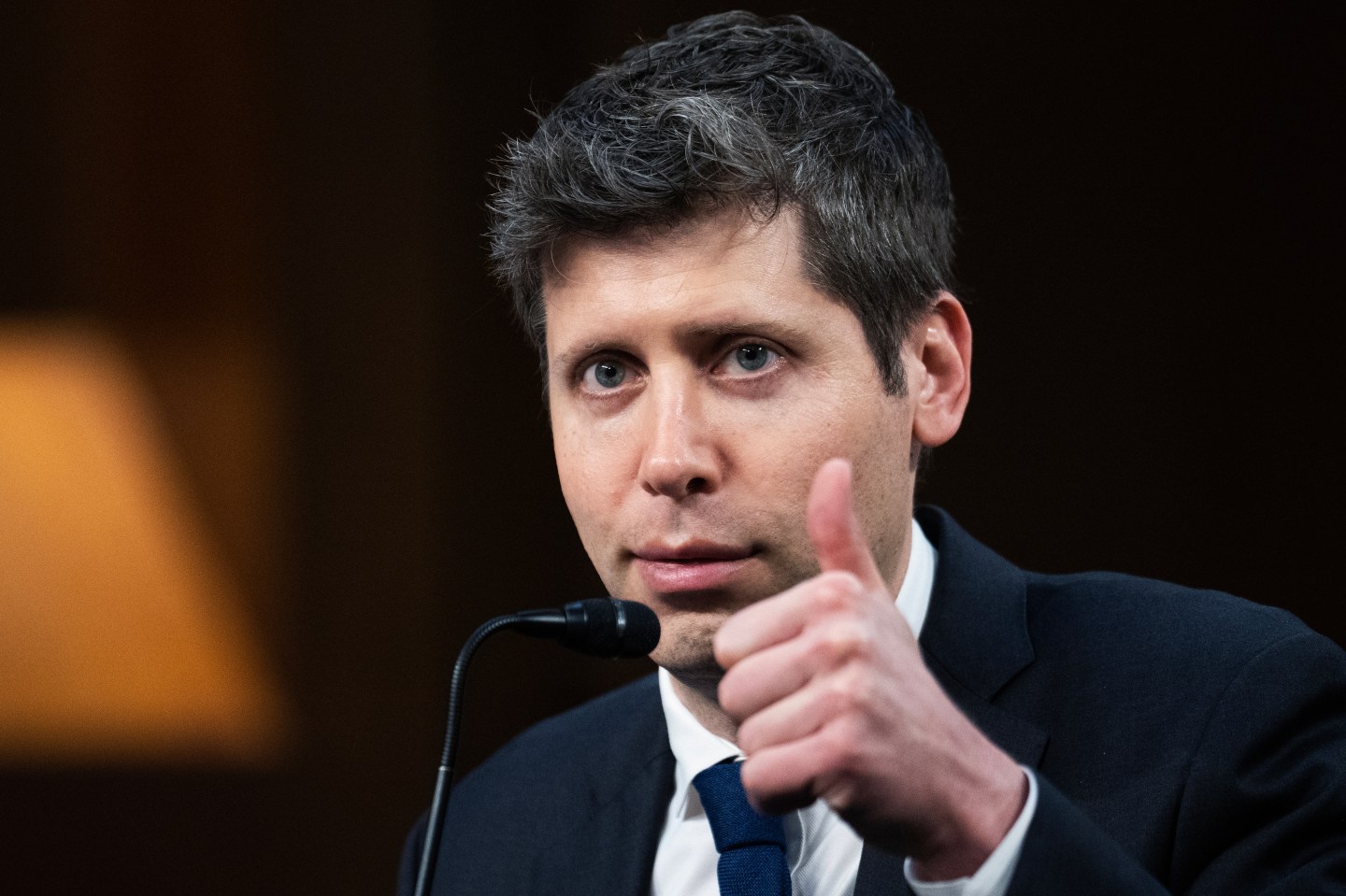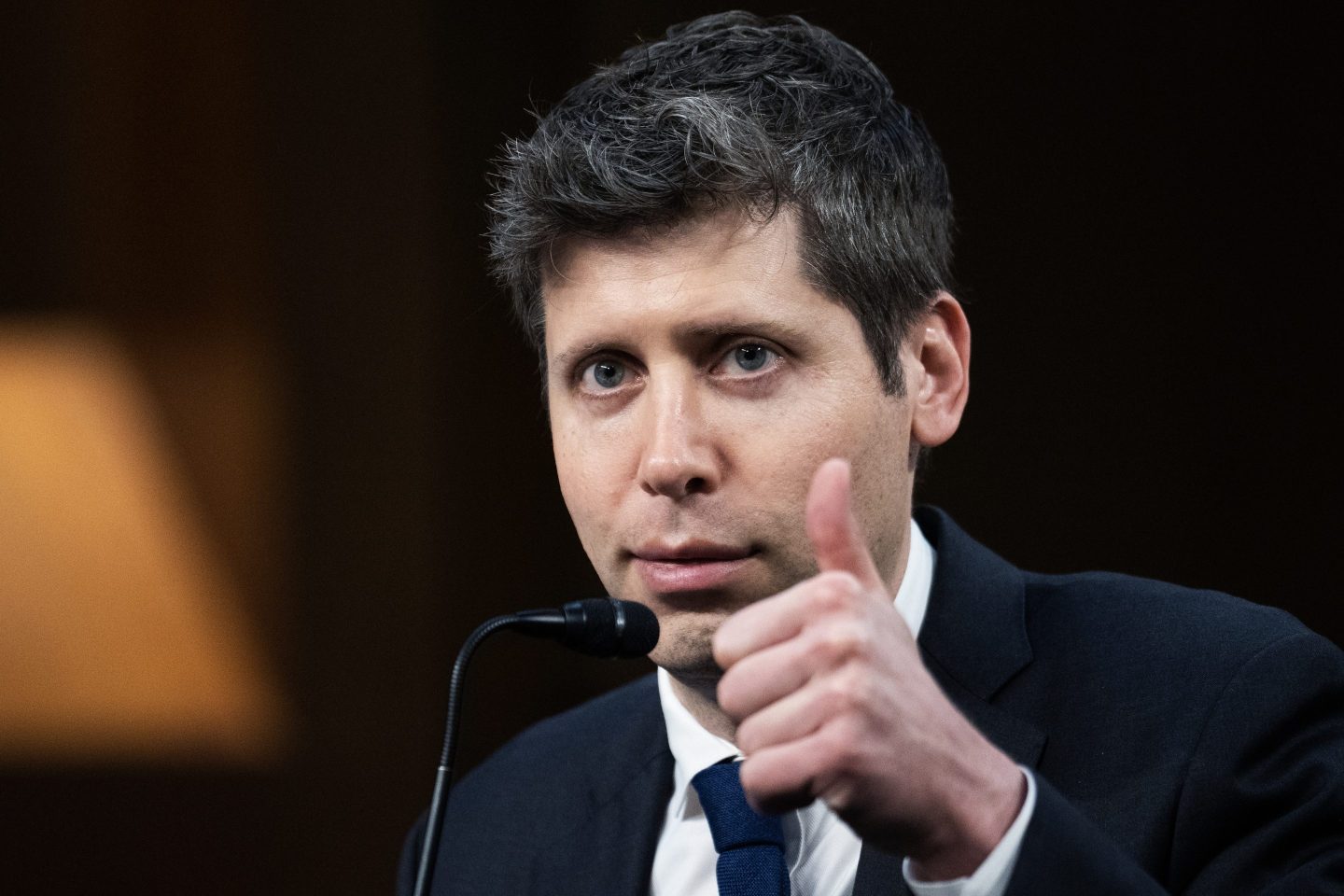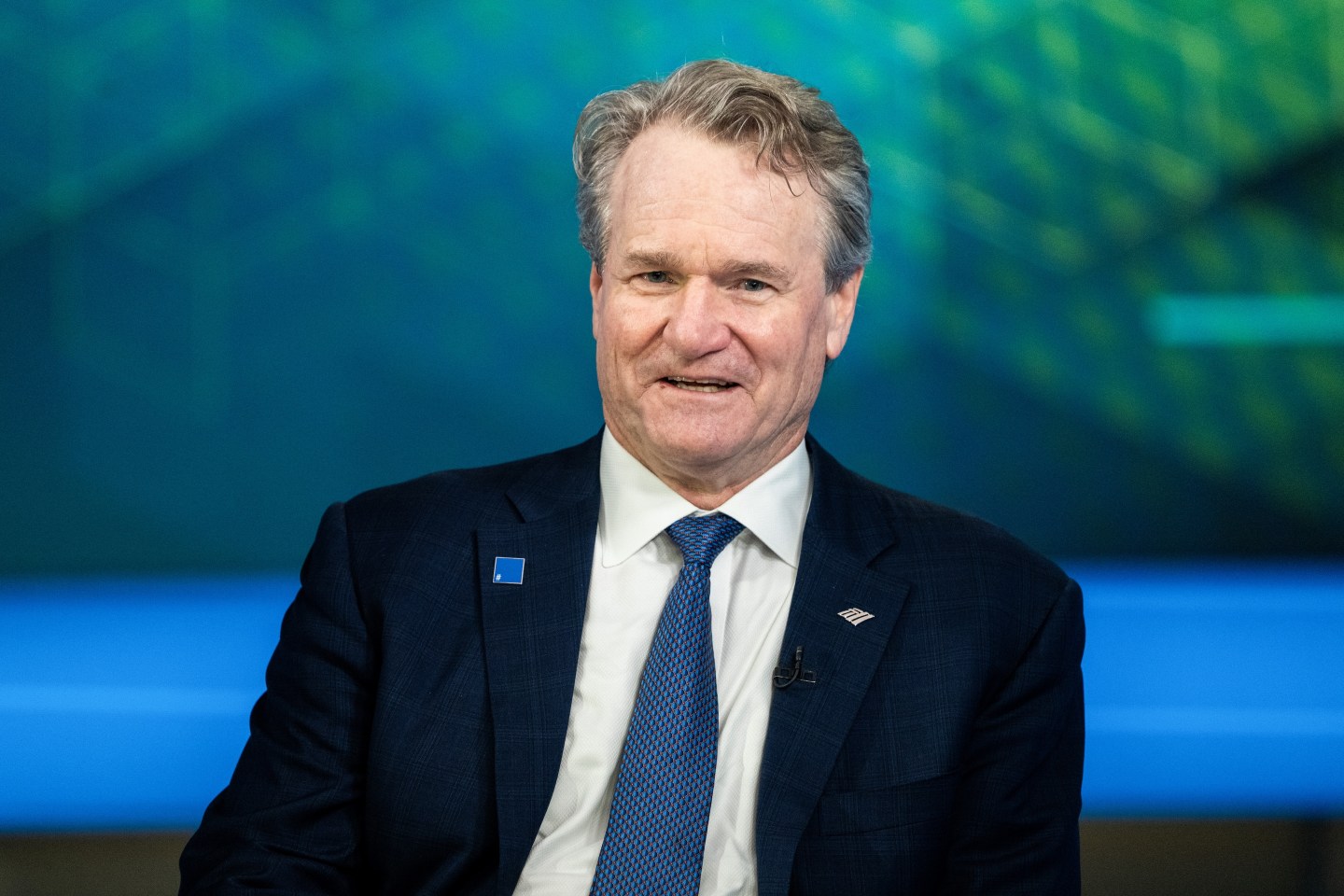Good morning. Fortune released its second-ever 100 Most Powerful People in Business list yesterday, and to everyone’s great shock, it’s chock-full of tech leaders. (I kid.)
Eight of the top 10 individuals in the ranking hail from the tech category, in fact. Five are members of the Magnificent Seven big tech companies; two are leaders of Chinese tech giants. And one is, naturally, Sam Altman.
Surprises? Apple CEO Tim Cook is on the list, but at No. 15—the lowest of his Magnificent Seven peers. Amazon founder Jeff Bezos is just two spots away from his CEO successor, Andy Jassy, but Google cofounders Sergey Brin and Larry Page are dozens of spots away from theirs, Sundar Pichai. Netflix co-CEOs Ted Sarandos and Greg Peters make an appearance on the list, but the only legacy Hollywood leader to join them is Disney CEO Bob Iger.
And can I just say? The elder millennials are holding it down in a big way. Among them: Meta’s Mark Zuckerberg, OpenAI’s Altman, Coinbase’s Brian Armstrong, Anthropic’s Dario and Daniela Amodei, SAP’s Christian Klein, ByteDance’s Zhang Yiming, Airbnb’s Brian Chesky, Spotify’s Daniel Ek, DeepSeek’s Liang Wenfeng, Robinhood’s Vlad Tenev, Stripe’s Patrick Collison, Y Combinator’s Garry Tan, and Thrive Capital’s Josh Kushner.
To my peers: Free showing of Garden State at my place, folks. I’ll bring the Gushers.
Today’s tech news below. —Andrew Nusca
Want to send thoughts or suggestions to Fortune Tech? Drop a line here.
OpenAI launches its first open model in years

Despite what its name suggests, OpenAI hadn’t released an “open” model—one that includes access to the weights, or the numerical parameters often described as the model’s brains—since GPT-2 in 2020.
That changed Tuesday. The company launched a long-awaited open-weight model, in two sizes, that OpenAI says pushes the frontier of reasoning in open-source AI.
OpenAI CEO Sam Altman had teased the upcoming models back in March, two months after admitting, in the wake of the success of China’s open models from DeepSeek, that the company had been “on the wrong side of history” when it came to opening up its models to developers and builders.
But while the weights are now public, experts note that OpenAI’s new models are hardly “open.”
By no means is the company giving away its crown jewels: The proprietary architecture, routing mechanisms, training data, and methods that power its most advanced models—including the long-awaited GPT-5, widely expected to be released sometime this month—remain tightly under wraps.
The two new model names—gpt-oss-120b and gpt-oss-20b—may be indecipherable to non-engineers, but that’s because OpenAI is setting its sights on AI builders and developers seeking to rapidly build on real-world use cases on their own systems.
The company noted that the larger of the two models can run on a single Nvidia 80GB chip, while the smaller one fits on consumer hardware like a Mac laptop.
Notably, OpenAI declined to benchmark its new open-weight models against Chinese open-source systems like DeepSeek or Qwen—despite the fact that those models have recently outperformed U.S. rivals on key reasoning benchmarks. —Sharon Goldman
The NFL takes a 10% stake in Disney’s ESPN
Call it a Hail Mary for the House of Mouse.
Disney has agreed to sell a 10% stake in its lucrative ESPN business to the National Football League in exchange for taking ownership of the NFL Network, its linear Red Zone Channel, and NFL Fantasy.
Under the terms of the agreement, ESPN will add NFL Network to its portfolio of channels and distribute Red Zone, popular with diehard fans, to pay TV operators. (The NFL will retain ownership of the Red Zone brand and digital distribution rights.)
The swap is worth some $3 billion, according to the Wall Street Journal. It also requires regulatory approval.
There’s a lot at stake. ESPN linking arms with the most popular professional sports league in the U.S. pulls it closer to a key driver of revenue as it prepares to launch its own streaming offering in the fall and take on competition from Amazon, Netflix, and others.
(Two years ago, amid concerns that he might break up Disney à la Comcast or Warner Bros. Discovery, CEO Bob Iger said he sought a “soft landing” for ESPN that pursued a streaming future without sacrificing its TV cash. And here we are.)
Meanwhile the NFL gets to own a piece of one of its biggest rights-holders (not to mention one of Disney’s most prized assets) while better integrating its TV channels with the broader ESPN portfolio.
Disney currently owns 80% of ESPN; the final 20% is owned by Hearst. If the deal is approved, Disney’s share will drop to 72% and Hearst’s will drop to 18%. —AN
Former X CEO Linda Yaccarino will lead a health company
Well, that was fast.
Mere weeks after vacating the chief executive seat at X, the Elon Musk-owned social media service formerly known as Twitter, Linda Yaccarino has become the CEO of a digital health company.
eMed Population Health bills itself as a platform for GLP-1/GIP population health management. (Unfamiliar? The acronyms refer to the category of popular medications used to treat Type 2 diabetes and obesity, including Ozempic, Wegovy, Mounjaro, and Zepbound.)
It’s a unit of Miami-based eMed, founded in 2020 and led by former American Medical Association president Patrice Harris.
The company says Yaccarino will be tasked with expanding its services “to accommodate additional national and global employer and government partnerships,” among other things.
“Her ability to forge game-changing partnerships and navigate complex markets will position the company to become the definitive global leader in population health solutions,” the official announcement reads.
Yaccarino, a media industry veteran who for years led ad sales at NBCUniversal, departed X after Musk merged the service with his xAI artificial intelligence company, effectively demoting her.
She spent most of her two years at X attempting to rebuild its ad business after brands exited the platform in response to Musk reducing content moderation, which resulted in hate speech appearing adjacent to advertisements. —AN
More tech
—AMD shares drop 5%. A rock-solid Q3 sales forecast couldn’t outshine Chinese market uncertainty.
—U.S. arrests Chinese nationals on charges of illegally shipping AI chips to China from 2022 to 2025.
—Roku launches Howdy. Its ad-free streaming service featuring content from Lionsgate, Warner Bros. Discovery, and others is $3 per month.
—Grok’s “spicy” option is too hot to handle. Its generative AI video tool Imagine willfully produces nude deepfakes of celebrities.
—Snap shares plummet 15%. Global average revenue per user in Q2 missed analyst expectations and bucked category trends.
—Google DeepMind releases Genie 3. The AI model can generate 3D worlds from a prompt.
—Wikipedia editors battle AI slop. Fighting fire with fire.














